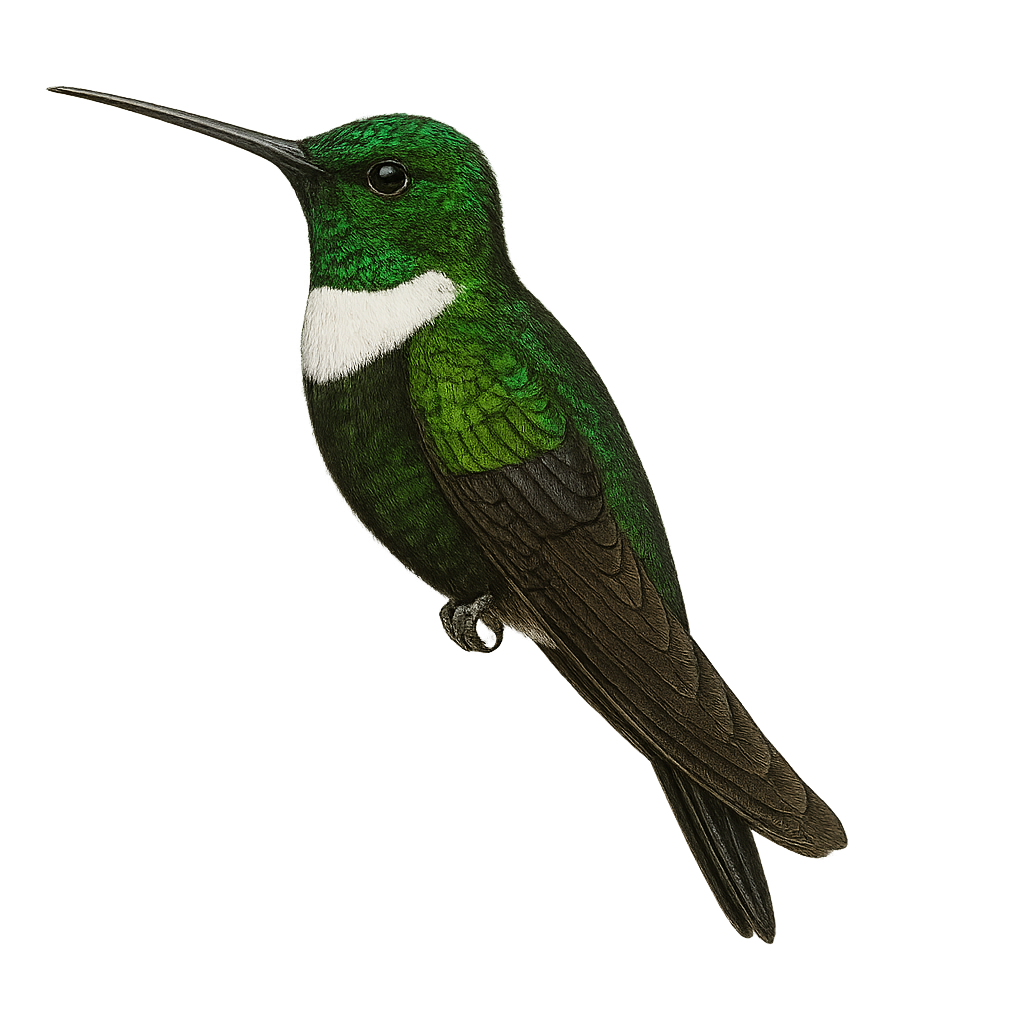Your wildlife photography guide.
Explore the collared inca in detail, study its behavior, prepare your shots.
Where to observe and photograph the collared inca in the wild
Learn where and when to spot the collared inca in the wild, how to identify the species based on distinctive features, and what natural environments it inhabits. The WildlifePhotographer app offers tailored photography tips that reflect the collared inca’s behavior, helping you capture better wildlife images. Explore the full species profile for key information including description, habitat, active periods, and approach techniques.
Collared Inca
Scientific name: Coeligena torquata

IUCN Status: Least Concern
Family: TROCHILIDAE
Group: Birds
Sensitivity to human approach: Suspicious
Minimum approach distance: 5 m
Courtship display: February to April
Incubation: 16-19 jours
Hatchings: February to May
Habitat:
Humid forests, forest edges
Activity period :
Primarily active during the day, with peak activity in the morning and late afternoon.
Identification and description:
The Collared Inca, or Coeligena torquata, is a captivating bird of the Andes, easily identifiable by its glossy black plumage and distinctive white collar. It inhabits humid forests and forest edges, where it primarily feeds on nectar. Its swift and agile flight allows it to move effortlessly between flowers. This hummingbird plays a crucial role in the pollination of Andean plants. Although generally solitary, it can be seen in small groups during abundant flowering. Its adaptability to various habitats makes it a resilient species, although deforestation may threaten local populations.
Recommended lens:
400 mm – adjust based on distance, desired framing (portrait or habitat), and approach conditions.
Photography tips:
To photograph the Collared Inca, it's advisable to use a 400mm lens or longer to capture precise details without disturbing the bird. Look for areas with abundant flowers, as these birds are often attracted to nectar sources. Be patient and discreet, as although suspicious, the hummingbird can get used to your presence if you remain still. Use a fast shutter speed to freeze the rapid movement of its wings and achieve sharp images.
The WildlifePhotographer App is coming soon!
Be the first to explore the best nature spots, track rutting seasons, log your observations, and observe more wildlife.
Already 1 430 wildlife lovers subscribed worldwide

